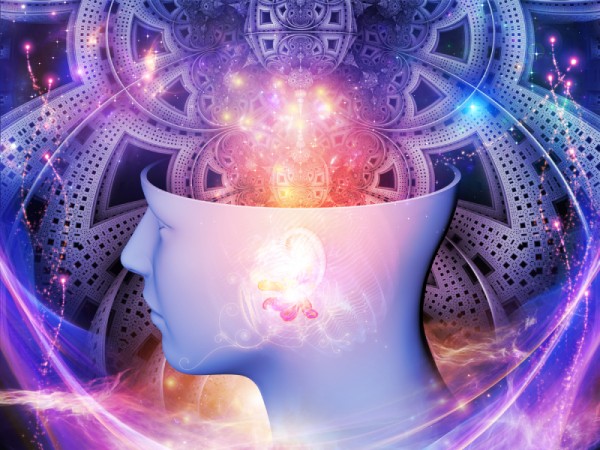This is the second of a series on Interpersonal Neurobiology: Relationships, Health, and the Brain.
Using knowledge to link differentiated functions can change life for the better.
Meet the Characters of the Play
If integration creates well-being and happiness, how do we create integration? We can create integration through kind and compassionate relationships with others, and ourselves. And we can create integration in the brain—the focus of this Series. In this second part, we’ll meet the basic parts that can be linked which will be explored in-depth in future entries. Integration is the linkage of differentiated parts, and so first we need to know the individual parts to then use our mind’s ability to focus attention to link these together.
Knowledge about the brain may feel daunting if we focus too much on the Greek terms (like nucleus accumbens or insular cortex), the numbers of neurons (one hundred billion) and their synaptic connections (hundreds of trillions) in the brain, or on the fact that the possible on/off firing patterns has been calculated to be a number larger than the atoms in the known universe (ten to the millionth power).
That being said, the brain as a system can be understood with some fundamental characters of the play of neural functioning. And this system’s play is actually graspable with a few fundamental principles. So the characters we’ll describe and the principles we’ll explore set the stage.
Function and Structure
At a basic level, the function of the brain is to enable energy to flow down connected neurons by way of action potentials (ions flowing in and out of membranes) and of chemical release and engagements (neurotransmitters connecting to receptors in the downstream neuron’s membrane). Patterns of these “neural firings” can create information—they stand for something of meaning other than simply ions flowing in and out of membranes and chemicals being released. So the function of the brain includes the transformation of electrochemical energy flow, some patterns of which contain information or the symbols of meaning of a neural representation.
A second fundamental principle you may have heard before is Carla Shatz’s paraphrase of Donald Hebb’s notion that “neurons which fire together, wire together.” This is the basic idea of neuroplasticity—how experience shapes changes in the brain’s structure. Where energy flows and neurons are active, links among simultaneously firing neurons are created or strengthened, making their firing together in the future more likely. Linking neurons through synapse formation and modulation is the basis of memory and learning. Neuroplasticity also includes stimulating the growth of new neurons, the laying down of myelin for skill-formation, and the shaping of the epigenetic control molecules that influence future gene expression and the subsequent growth of neural structure.
A third principle; is that genes shape the fundamental structure of the brain in addition to the brain’s architecture being molded by experience. In this way, our evolutionary history and the genes we’ve inherited play a role alongside ongoing experience in shaping how neurons grow their interconnections. It is this shaping that influences how neural structure is created.
And so we now move from function to structure. Genes guide neuronal migration so that these basic cells of the nervous system move from a neural tube that becomes the spinal cord up into the head to become the brain. This set of neurons within the skull differentiates into several large regions, each with its subcomponents. Paul McLean coined the term, “triune brain” as a useful framework for diving into some aspects of this structure. This three-part brain perspective has the deep brainstem, the central limbic area, and the higher outer bark or cerebral cortex. Brainstem, limbic and cortical regions each have their own local regions, which naturally could be divided up into smaller and smaller sub-regions and clusters of neurons called nuclei.
Beyond these three parts, there is also the cerebellum, and though this means “little brain” it’s actually quite big and important in ways we are just beginning to understand. The cerebellum is not only crucial in coordinating our motion, but also it seems essential too in integrating thought with emotion. But we’ll leave this area out for now, as we just don’t know that much about this important area that sits at the back behind the brainstem.
From a developmental point of view, the brain develops from the bottom up, and the back forward.
The oldest part of the brain is the brainstem. If someone writes that, what that can refer to is that it is over 300 million years old—and also that it develops first in the womb so that at birth it’s pretty much fully formed.
The next oldest part is the limbic region. Partially developed at birth, it is about 200 million years old in evolutionary terms, emerging as we emerged as mammals.
And the third region is the newest kid on the block, the cerebral cortex. Also known as the “new mammalian” (neomammalian) cortex, or simply the neocortex or just cortex, its frontal areas have emerged in our primate evolution over these last hundred million years, and the front most part—the renown “prefrontal cortex”—has grown in complexity in the last few million years of our human evolution. And, as your prefrontal region itself may have just surmised, it is also the last to fully develop in our human development—continuing its integrative growth well into our third decade of life.
So this is a good place to stop for today. These three major areas play important roles in our lives. And what we learn about them, and how we learn to use that knowledge to link their differentiated functions, can change your life for the good. Bring your whole brain to the reading next time and see you soon!
INSPIRE TO REWIRE is a mark owned by Dr. Daniel J. Siegel and Mind Your Brain, Inc. All Rights Reserved.



